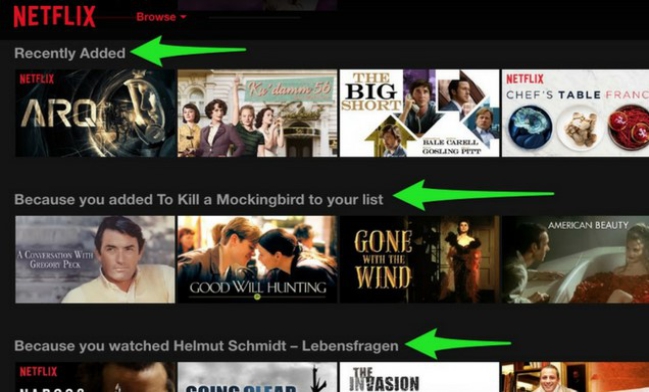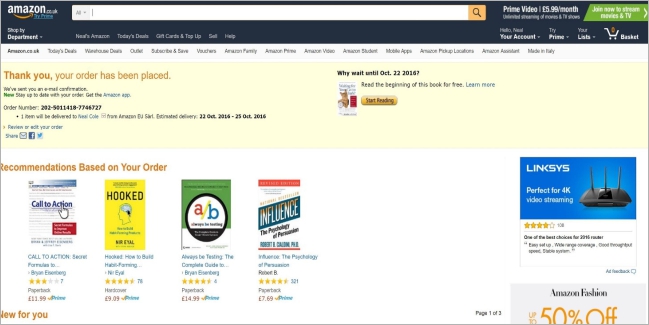Ever noticed how Netflix seems to know just what you want to watch? That’s personalized product recommendations at play!
While shopping, traditional shops have lesser variety and fewer brands than a mall, but the sales staff give personal attention and assistance that make the customers feel special, and enhance the shopping experience.
Imagine this experience being offered on your website or app? That’s the role of personalized product recommendations.
In this blog, we’ll explore strategies that make your customers feel like you’re reading their minds, from Netflix-style suggestions to Amazon’s “customers also bought” genius.
What do you mean by personalized product recommendations?
Personalized product recommendations refer to the practice of suggesting products to customers based on their individual preferences, behaviors, and past interactions with a brand.
This approach uses data analysis and predictive algorithms to offer tailored suggestions, aiming to enhance the shopping experience, increase customer satisfaction, and boost sales.
For example, if a customer frequently buys or browses sci-fi books in an online bookstore, they might receive recommendations for similar titles or authors in that genre. This personal touch makes shopping more relevant and engaging for the customer.
The best sites use product recommendations in their strategy to make their customers feel that they are getting a completely personalized experience that is unique to them.
Think of all the times you felt Netflix knew you better than your closest friend. Or the time when MakeMyTrip recommended hotels based on your recent search.
While you are sifting through your cart, Amazon would offer you recommendations of products and you do end up adding a few more things in your cart.

These brands ace their recommendation game based on important strategies they have adopted to get the best out of the product recommendations. There are multiple ways to formulate them based on:
- Audience segment
- Testing
- Recommendation site
- Time of recommendation
- Volume of recommendation
These strategies have a huge appetite for data. The good news is that the product recommendation engines have just the right amount of data to feed the strategies. These engines use predefined algorithms and aggregated customer data to show the customers what they might be interested in. So, here is the different customer data the recommendation engine is looking at:
- Geographic location
- Demographic information
- Search queries
- Purchase history
- Current shopping cart
- Behavior in social media (likes, shares, etc.)
Top 5 personalized product recommendation strategies that work
Now that you know what strategies you want to concentrate on and what kind of data a recommendation engine is capable of gathering, let’s talk about some of the top personalized product recommendations practice that you should keep in mind no matter what you are selling.
1. Test your recommendation strategies
Product recommendations are great, but blending their power with your human direction can do wonders.
A “trending offer” may work well on the home page but not on the checkout page. “Customers who bought this, also bought” on the shopping cart page may work better than that on the product page.
The best way to know what works and what doesn’t is by testing out the strategies.
When in doubt, A/B split test. Combined with all the above points, testing the recommendations across pages, timing, channels, and segments can help you achieve amazing results. Keep monitoring the performance of your recommendations and adapt and refine your strategies.
2. Spread out your recommendations
Place your recommendations in expected as well as unexpected places. Product pages, home pages, check out pages, and shopping cart pages on the website and app are obvious places where you can place your recommendations.
But why limit to these sites only?
Why not place them on your 404 page and give your customers an easy way to click back to your website?
Or maybe the order tracking page or the order confirmation page. The point is to evaluate all possibilities that you could use to attract your users’ attention.

Also you can expand to offsite recommendations as well. You can also put recommendations in your cart abandonment emails, follow-up emails, or even newsletters.
If someone has looked at the same product several times, you can send emails asking if they’re still interested and show similar products.
Use geo-location data, and send push notifications to serve consumers recommendations. This is your chance to be everywhere your customer is, and it’s up to you to leverage their presence across multiple channels.
3. Analyze right customer behaviors
The first step to product recommendation is understanding that every customer is different and understanding their reason for buying something.
Some customers may like a product based on colors/style, and another customer would choose a product on the basis of brand. So you should be able to identify this and act upon it.
A customer buys solar-powered bulbs and garden lights. He is probably interested in environment-friendly stuff.
So, he might like garments made of organic fiber and colors. So, recommending eco-friendly products makes sense. A customer has been buying diet food. Promoting exercise equipment, gym wear, yoga mats, etc., can work.
The idea is to go above and beyond the obvious strategies like “since you liked that, you might like this”. Customer behavior data is a treasure.
Related Read: Real-Time Personalization: Why Understanding Consumer Behavior is the Secret to Crafting 1:1 Customer Experiences
4. Find your optimum level of recommendations
The thing about recommendations is that most of us believe that the more you expose customers to your products, the more likely they are to purchase them.
But, the one thing you want to avoid at any cost is bombarding your customers with recommendations. That too irrelevant ones.
And even if your recommendations are spot-on you might just end up tuning out your customers if you go ahead and place your recommendations on every single page.
You should be concentrating more on the ‘quality’ of your recommendations as opposed to the ‘quantity.’ The sole purpose of your recommendation is to show them what they’re actually looking for.
5. Use social proof
If it’s a product you want to buy or a series you want to watch, as customers, you always want to check out the reviews to make sure you’re getting the worth of your money and time (in case of series).

The popular tabs like ‘Best Sellers’, ‘Top Picks’, and ‘Customers Choice’ further add to the credibility of your products and urge your customers to view more offerings and finally buy them.
Picking the right recommendation strategy
Your website traffic comprises a variety of users. Some may be first-time visitors, some one-time and many frequent. The data you have on your regular users would be much more than what you have on your one-time users.
When it comes to product recommendations, there are three major types of strategies you can look at, depending on the data available:
1. Global recommendation strategies
This is apt for new users during their first visit, for which brands lack a user data profile. The best approach to this would be serving them recommendations based on the popularity of products and the latest trends.
2. Contextual recommendation strategies
Here you tailor recommendations according to the product attributes (i.e. color, style, and brand), traffic source, device, operating system, local weather, time, the frequency at which different products are purchased together, and many more aspects which the AI engine provides you.
3. Personalized recommendation strategies
This is hands down the most sophisticated strategy-type. The type of recommendation today’s customer wishes to experience. It leverages both product data and user data to surface relevant recommendations for each user on an individual and personal level.
If you are doing it, do it right
Choosing the proper strategy for the desired objective is essential to success, and the misapplication of strategies can have serious repercussions.
Not only can it cause a loss of revenue, but it also may drive customers to lose faith in both the value of recommendations and your ability to deliver personal, engaging experiences altogether.
Your customers come from different sources. Some know what they’re looking for others will be like that friend who always orders the chef’s recommendation at any restaurant.
So customer experience is taking over as the key differentiator between online entities. Brands must capitalize on the opportunities afforded to them through recommendations, leveraging them to make them a contributing factor to overall success.
If you feel the need to invest in a robust multi-channel personalization suite, then feel free to contact us to show you first-hand how it can be done.







